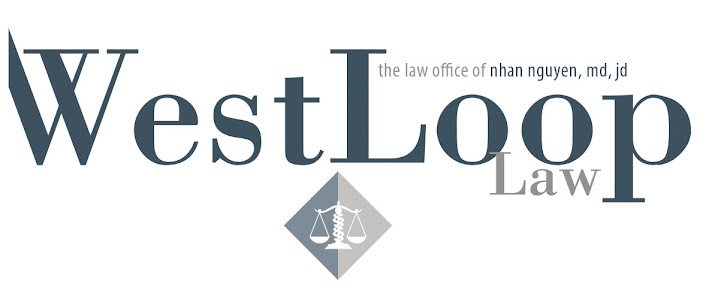Most people just assume that rear-end crashes are almost always the fault of the driver who crashes into the back of the car ahead of them. However, this isn’t always the case.
This article will shed some light on the specifics of liability for a rear-end crash and under what conditions the driver of a car that crashes into the back of another vehicle wouldn’t be found at fault.
Car wrecks can happen in many different ways. From a minor fender-bender to a high-speed crash, the range of possible scenarios is nearly limitless. One of the most common kinds of car accidents is when a car crashes into the back of another vehicle, also known as a rear-end collision, which account for around 28 percent of crashes reported each year. It’s important that you understand your rights so they can be protected after an accident.
Houston Car Wrecks & the Concept of Negligence
Negligence is the term used to describe when a person’s actions are below the agreed-upon standards of care. Sometimes, you need the help of a Houston car accident lawyer to determine who is actually at-fault for an accident.
Essentially, it’s considered negligent if the behavior of the driver that caused the crash isn’t in line with the actions that another person would have or wouldn’t have done under similar circumstances.
In order to establish that the other driver was acting negligently at the time of the collision, you have to first prove that there was a duty of care in place.
This is pretty simple because all drivers have a duty of care when behind the wheel of a car. Second, you have to establish that the other driver breached this duty. Drivers can breach their duty of reasonable care in many ways.
Some of the most common breaches of care on the road include:
- Not concentrating on the road
- Not stopping within an acceptable time
- Not driving at a reasonable speed — not just based on posted speed limits but also on roadway conditions
- Not maintaining control of the car
- Not yielding the right of way
- Not using turn signals
- Not following at a safe distance
Third, you have to establish that the driver’s breach of duty caused the crash directly. This can be done by gathering evidence with the help of a Texas personal injury lawyer.
Lastly, you have to prove that you suffered actual damages, like bodily injury or damage to your car, as a direct result of the crash.
Establishing Fault in a Rear-End Car Crash
The driver of the vehicle that rear-ends the car ahead will nearly always be determined at least partially negligent.
Each and every driver has a duty to follow other cars at a safe and reasonable distance. The main reason for maintaining a safe distance is that drivers tend to slow down or even stop abruptly and without warning, maybe to avoid a hazard on the road or just due to the flow of traffic.
You are expected to keep enough distance between you and the vehicle ahead to avoid an accident in the event of an unexpected stop or sudden slowdown. However, it’s possible that the driver in the lead, the person driving the rear-ended vehicle, was acting negligently. Let’s look at some potential scenarios where this would be the case:
- A driver abruptly backs up
- A driver abruptly stops to make a turn and doesn’t make the turn
- The vehicle’s brake lights aren’t functioning
- The driver has a flat tire but fails to pull over to the shoulder or turn on the vehicle’s hazard lights
In all of these situations, the driver of the vehicle that is rear-ended will likely be found negligent to some degree. The legal impact of their negligence will depend on how much the negligence of the driver contributed to the crash and how that particular state handles crashes where there is more than one liable party.
If more than one driver is found liable for the wreck, the results vary on a state-by-state basis. In Texas, we have a pretty strict system of “comparative negligence,” also referred to as “proportionate responsibility.”
Under Texas law, it’s specifically stated that a plaintiff “may not recover damages if his percentage of responsibility is greater than 50 percent.” Whoever is trying this fact — usually the jury in personal injury cases — is required to “determine the percentage in responsibility, stated in whole numbers,” for all parties involved in the accident. This could even include third parties who aren’t directly involved in the case, as well.
Houston Car Accident Lawyer Near Me
Houston traffic is notorious. Commuting down congested highways —under seemingly endless construction— becomes just another part of your daily routine. Houston’s roads are some of the most dangerous and deadly in the country, leading the state in crashes in 2011 according to statistics compiled by the Texas Department of Transportation.
The state of Texas is one of the worst when it comes to car crashes. There hasn’t been one day in the state without a crash since November 7, 2000. Someone was killed in a Texas car crash every 2 hours and 25 minutes in 2018, and 249,241 people were injured in wrecks that same year.
After a car wreck, you’ll probably find yourself in serious pain —and with a ton of unexpected debt. It’s easy to become overwhelmed dealing with the aftermath of a crash and making choices on what to do next.
That’s why you need the help of a Houston car crash lawyer to help you make the right choices and secure the compensation you need and deserve. The team of personal injury lawyers at West Loop Law and The Law Office of Nhan Nguyen, MD, JD will fight for your best interests. We treat every case with equal importance, and we focus on getting the effective results our clients deserve.
